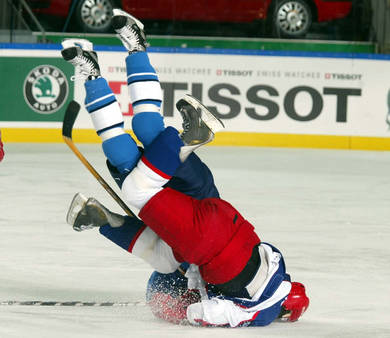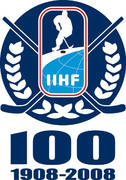

Story #19 IIHF allows bodychecking in all three zonesJuly 8, 1969 – Crans-sur-Sierre, Switzerland
The IIHF’s summer Congress of 1969 provided arguably the most substantial and dramatic rule changes in the history of international hockey. Aligning the game with the NHL, the IIHF voted to allow body-checking in all areas of the ice. Previously, hitting was allowed only in the defensive zone. A defenseman, inside his blueline, could hit an attacker. But the forward was not allowed to bodycheck a defenseman in his defensive zone. The neutral zone was a “demilitarized zone” – no hitting allowed.  Today, it seems very strange that hitting was forbidden in certain parts of the ice, and indeed the game changed significantly when this rule was instituted. For starters, Canada and USA could play a more aggressive game. After all, a vital part of hitting is intimidation and forcing errors and turnovers, and this is more easily done in the offensive end than between the bluelines. About the Top 100 StoriesAs part of the IIHF's 100th anniversary celebrations, www.IIHF.com is featuring the 100 top international hockey stories from the past century (1908-2008). Starting now and continuing through the 2008 IIHF World Championships in Canada, we will bring you approximately three stories a week counting down from Number 100 to Number 11.
The Final Top 10 Countdown will be one of the highlights of the IIHF's Centennial Gala Evening in Quebec City on May 17, the day prior to the Gold Medal Game of the 2008 World Championship.
These are the criteria for inclusion on this list: First, the story has to have had a considerable influence on international hockey. Second, it has to have had either a major immediate impact or a long-lasting significance on the game. Third, although it doesn't necessarily have to be about top players, the story does have to pertain to the highest level of play, notably Olympics, World Championships, and the like. The story can be about a single moment — a goal, a great save, a referee's call — or about an historic event of longer duration — a game, series, tournament, or rule change. |
 Click here for the 100 Top Stories
|
|






